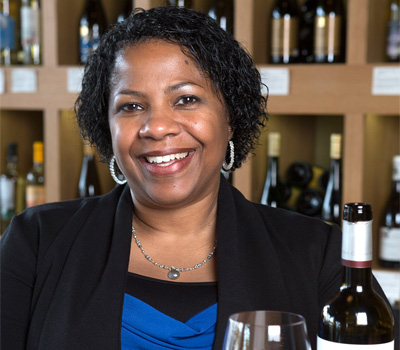

You run an all-domestic wine list at One Market. What are some of the most exciting trends you’re seeing right now in relation to wines on the West Coast?
I am seeing a shift with chardonnay styles. Guests are looking for more of a traditional chardonnay, not quite as oaky and buttery, a bit more balanced, crisp and dry.
Also, guests are coming in looking for older vintages of both chardonnay and reds, especially cabs. I tell them: in California, we are very thirsty—wine doesn’t last long around here! Most 2007s, for me, are gone already. With some wineries, we’re even on the 2010s.
I’m trying to set up relationships with wineries and ask about library wines, and it’s difficult, because unless it’s a bigger house, they don’t have library wines. And if they have them, they’re for their own private collection, so that they can follow how the wines age.
I was able to pull older vintages from a few producers: Constant, Skipstone, Mondavi Reserves (1995-2001, 2005) and Jordan. And some older Dunn Howell Mountain from 1998 and 2005.
They’re two ends of the spectrum, but I would say that guests have really gravitated toward the 2005 Skipstone Oliver’s Blend from Alexander Valley and the 1998 Dunn Howell Mountain. I sold a lot of those two wines this past year.
Your top-selling wine this year was a Willamette Valley grüner veltliner, from Chehalem. How did that happen?
I’m always on the lookout for aromatic whites. I had gone through a lot of aromatic whites—and a lot were out of stock. I went to Pinot Camp in June, tasted through all of their wines, and was completely struck by the grüner. I’ve tasted other domestic grüner veltliners, but theirs was very Austrian in style, they hit the nail on the head: dry, flinty, hints of fennel, but also fleshy and substantial. You get the sense that, where those grapes are growing, it’s cold. It’s not just cool, it’s cold.
You list the Epiphany Grenache Blanc as your biggest new success this year.
I’ve worked with the Epiphany Grenache Blanc for almost two years now. We have several different tasting menus in rotation, and that’s a staple for me. It works so well with the chef’s cuisine. It’s my exercise with guests about how food changes with wine and wine changes with food. With food, it blossoms, it has this rich fruit in the middle that’s not cloying at all, and finishes dry.
The Prisoner, a perennial high performer on our poll, was one of your top-selling zinfandels. What attracts people to that wine?
It’s interesting because it has a lot more market presence now. You are able to find it a little bit more readily.
If I have another zin blend that I’m pouring, [The Prisoner] usually beats it by leaps and bounds. People like it, and the blend changes every year, it’s the whole kitchen sink. I like to think of it as their homage to Châteauneuf-du-Pape, but made with everything under the sun.
If I have another one by the glass, it’s usually more rustic, drier, more like an Italian country wine.
I’m surprised to see relatively little pinot noir in your list of top-selling wines. Has the pinot frenzy abated somewhat?
No, I sell a lot of pinot noir. This last year my top selling pinot was Merry Edwards; it toggled between the Sonoma Coast, a new bottling from her, and the straight-ahead Russian River Valley. They were offering special pricing for restaurants, which allowed me to play with those two. We also make our own bottling, the Testarossa Lark Creek Cuvée, from the Monterey appellation.
The Argyle Pinot Noir from Willamette Valley did well, as did Coattails (which is made by Mike and Jared Eztel). I think they made 96 cases for their first release, and the wine is absolutely dynamite. They’re pulling from their father’s property up on Ribbon Ridge. I cannot wait for the next vintage. I bought 50 bottles and they all sold—guests absolutely loved the wine. And it’s not inexpensive, either, at over $150 a bottle.
I imagine you must get guests every now and then who are a bit uncomfortable with an all-domestic list. How do you find ways to make them happy?
What I tend to do when I’m tasting: I’m trying to pinpoint an area or region that is not domestic. When I’m tasting pinot, I’m thinking of different areas in Burgundy, when I taste chard I’m thinking, is it more Puligny-Montrachet, or is it more Meursault-like. The same with cabernet and merlot.
I’ve done particularly well with merlot from the Pacific Northwest. Most people find merlot to be wimpy. I’ve been seeking out smaller producers in Red Mountain and Walla Walla that are making great wine, like Mark Ryan and Sparkman. Sparkman’s 2007 Ruby Leigh from Red Mountain is a merlot-based blend, and it’s absolutely delicious.
Longtime senior editor at Wine & Spirits magazine, Luke now works for the Stanford Technology Ventures Program.
















